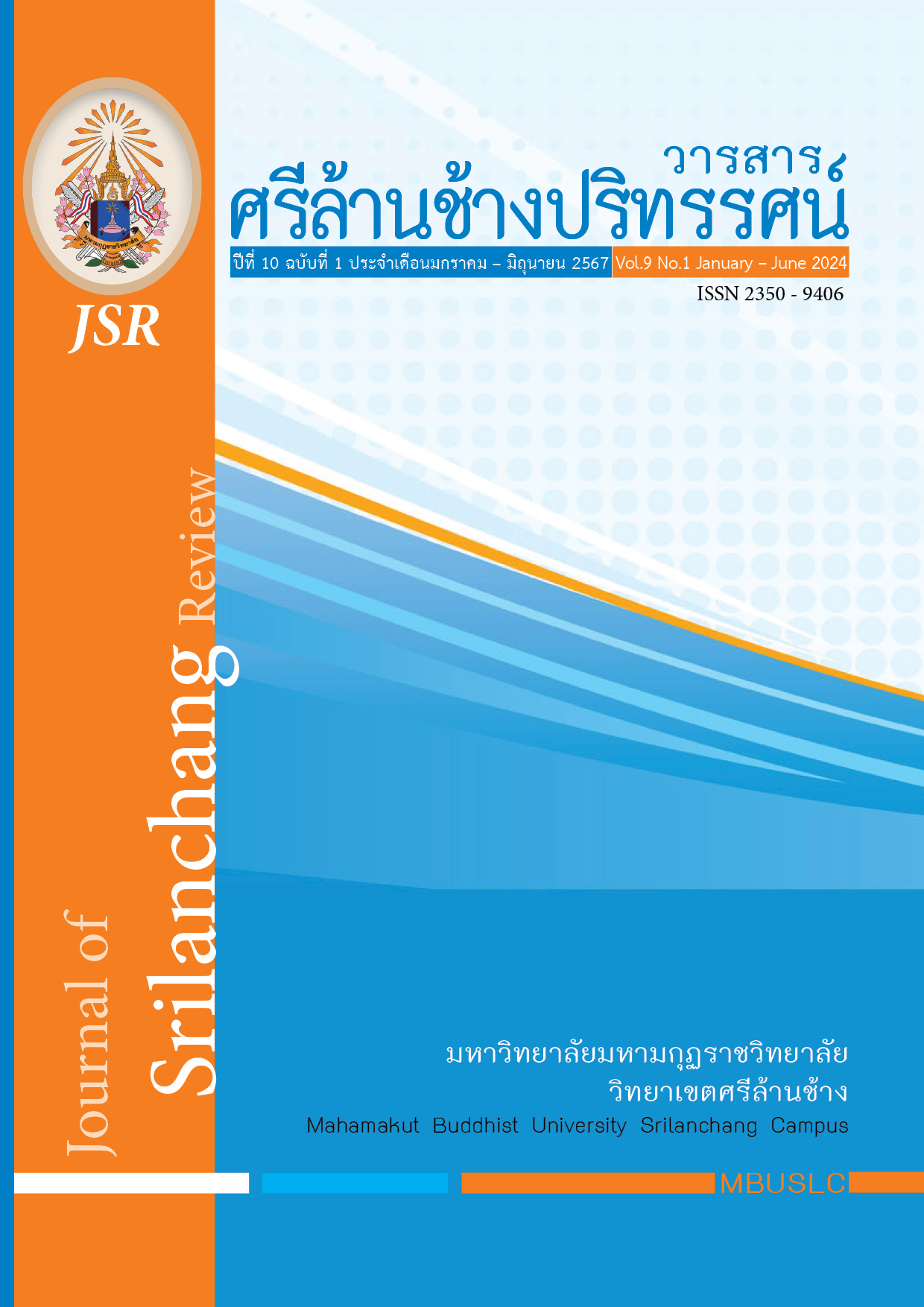INFRASTRUCTURE DEVELOPMENT OF THE THAI LOCALS
Main Article Content
Abstract
This academic article’s objective is for some knowledge about the extents of the local infrastructure development for prosperity or betterment of the existence in a systematic way. Humans as a development center are the most important element. If humans do not exist, development hardly happens. Besides, development principles or methods are steps or processes for people to participate in the local resource management for the most benefits in their area, and to solve concretly their own problems efficiently and effectively.
The Thai local development is a guideline for operations of the related agencies, including people or local communities for mutual collaborations. Characteristically, local developments have similar nature or different contexts. They depends on environments, economics, societies, politics, geographical conditions, culture, traditions, and lifestyle of people in the areas.
Then, the infrastructure development of the Thai locals is public services for satisfying their needs and the local community. This development is a process consisting of these elements: procurement, planning, implement, maintenance, development, improvement, transportation, roads, public water resources for utility and use, including water system, and electricity. The Thai local infrastructure has three public utility components: water, electricity, and transportation.
Article Details

This work is licensed under a Creative Commons Attribution-NonCommercial-NoDerivatives 4.0 International License.
บทความที่ได้รับการพิจารณาจากคณะกรรมการผู้ทรงคุณวุฒิและเผยแผ่ในวารสารฉบับนี้ เป็นทัศนคติและข้อคิดเห็นส่วนบุคคลของผู้เขียนแต่ละท่าน ไม่ถือว่าเป็นทัศนะคติและความรับผิดชอบ
ของบรรณาธิการ
บทความ ข้อมูล เนื้อหา รูปภาพ ฯลฯ ที่ได้รับการตีพิมพ์ในวารสารศรีล้านช้างปริทรรศน์ ถือเป็นลิขสิทธิ์ของวารสารศรีล้านช้างปริทรรศน์ หากบุคคลหรือหน่วยงานใดต้องการนำทั้งหมดหรือส่วนหนึ่งส่วนใดไปเผยแพร่ต่อหรือเพื่อกระทำการใด ๆ จะต้องได้รับอนุญาตเป็นลายลักอักษรจากวารสารศรีล้านช้างปริทรรศน์ ก่อนเท่านั้น
References
กนิษฐา สุทธิเจริญ. (2555). ความคาดหวังของประชาชนที่มีต่อการพัฒนาท้องถิ่นขององค์การบริหารส่วนตำบลวังสรรพรส อำเภอขลุง จังหวัดจันทบุรี. รัฐประศาสนศาสตรมหาบัณฑิต. บัณฑิตวิทยาลัย : มหาวิทยาลัยบูรพา.
กองบรรณาธิการ บริษัท เอ็กซเปอร์เน็ท จำกัด. (2551). กลยุทธ์การวางแผนพัฒนาพื้นที่ท้องถิ่นเชิงบูรณาการ. กรุงเทพฯ: เอ๊กซเปอร์เน็ท.
กองยุทธศาสตร์และงบประมาณ. (2564). แผนพัฒนาท้องถิ่นขององค์การบริหารส่วนจังหวัดนครสวรรค์ พ.ศ.2566-2570. นครสวรรค์: องค์การบริหารส่วนจังหวัดนครสวรรค์.
โกวิทย์ พวงงาม. (2558). นวัตกรรมท้องถิ่นขององค์กรปกครองส่วนท้องถิ่น. กรุเทพฯ: เสมาธรรม.
ณรัชช์อร (ณัฐนรี) ศรีทอง. (2554). การบริหารงานพัฒนาชุมชนเชิงยุทธศาสตร์. กรุงเทพฯ: โอเดียนสโตร์.
ปฐม มณีโรจน์. (2541). ทฤษฎีและแนวความคิดในการพัฒนาการบริหาร. กรุงเทพฯ: สุวีวิยาสาส์น.
ประยูร กาญจนดุล. (2541). ความรู้ความเข้าใจของประชาชนเรื่ององค์การบริหารส่วนตำบล. กรุงเทพฯ:
นิติธรรม.
ประสิทธิ ตงยิ่งศิริ. (2529). เอกสารการสอนชุดวิชาการทฤษฎีและนโยบายการพัฒนาเศรษฐกิจ. นนทบุรี : มหาวิทยาลัยสุโขทัยธรรมาธิราช.
แผนพัฒนาเศรษฐกิจและสังคมแห่งชาติ ฉบับที่ 13 (พ.ศ.2566-2570). (2565). ราชกิจจานุเบกษา เล่ม 139 ตอนพิเศษ 258 ง วันที่ 1 พฤศจิกายน 2565.
พระมหาสมศักดิ์ ธีรวํโส (แหวนคำ). (2561). กระบวนการพัฒนาชุมชนเมืองและชนบทสู่ความยั่งยืน ในอำเภอเชียงคำ จังหวัดพะเยา. วิทยานิพนธ์หลักสูตรปริญญาพุทธศาสตรมหาบัณฑิต สาขาวิชาการพัฒนาสังคม. บัณฑิตวิทยาลัย: มหาวิทยาลัยมหาจุฬาลงกรณราชวิทยาลัย.
พาณี อนันตชัย. (2542). กระบวนการพัฒนาชุมชน. พิมพ์ครั้งที่ 1. นครปฐม: สำนักพิมพ์สถาบันราชภัฏนครปฐม.
ไพบูลย์ ช่างเรียน. (2517). ลักษณะสังคมและการปกครองของไทย. กรุงเทพฯ: ไทยวัฒนาพานิช.
รัฐธรรมนูญแห่งราชอาณาจักรไทยพุทธศักราช 2560. (2560). ราชกิจจานุเบกษา เล่ม 134 ตอนที่ 40 ก วันที่6 เมษายน 2560.
ราชบัณฑิตยสถาน. (2546). พจนานุกรมฉบับราชบัณฑิตยสถาน พ.ศ.2542. กรุงเทพฯ: นานมีบุ๊คส์.
ศิรินทรา บุญรอด. (2559). การมีส่วนร่วมของประชาชนกับการพัฒนาท้องถิ่นในพื้นที่องค์การบริหารส่วนตำบลท่าสะท้อน อำเภอพุนพิน จังหวัดสุราษฎร์ธานี. รัฐประศาสนศาสตรมหาบัณฑิต. บัณฑิตวิทยาลัย : มหาวิทยาลัยเกริก.
สนธยา พลศรี. (2545). ทฤษฎีและหลักการพัฒนาชุมชน. พิมพ์ครั้งที่ 4. กรุงเทพฯ: โอ.เอส.พริ้นติ้ง เฮ้าส์.
สนธยา พลศรี. (2550). เครือข่ายการเรียนรู้งานพัฒนาชุมชน. พิมพ์ครั้งที่ 2. กรุงเทพฯ: พิมพ์ที่โอ.เอส.พริ้นติ้ง เฮ้าส์.


